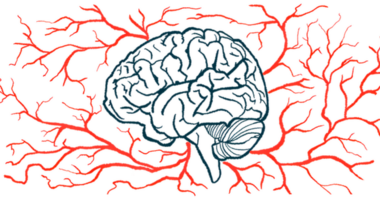Stem cell capsules restore motor function in Parkinson’s rats
Study shows iPSCs can replace dopaminergic neurons

Neural microtissues derived from pluripotent stem cells (iPSCs) can replace dopaminergic neurons, the nerve cells that are lost in Parkinson’s disease, and restore motor function when grown into tiny capsules and transplanted into the brains of model rats, a study led by TreeFrog Therapeutics found.
“TreeFrog Therapeutics has overcome the most complex challenges of developing a successful treatment for Parkinson’s disease using our C-Stem platform technology and producing a therapy containing mature dopaminergic neurons with a unique 3D format that promotes cell survival post-graft with proven pre-clinical results,” Jens Schroeder, MD, PhD, TreeFrog’s chief medical officer, said in a company press release.
The study, “Bioreactor-produced iPSCs-derived dopaminergic neuron-containing neural microtissues innervate and normalize rotational bias in a dose-dependent manner in a Parkinson rat model,” was published in Neurotherapeutics.
Stem cells in Parkinson’s
Parkinson’s is caused by the progressive damage and loss of dopaminergic neurons, the nerve cells in the brain that produce dopamine, a chemical involved in motor control. Replacing the damaged or lost dopaminergic neurons could help delay or even halt disease progression.
One approach uses iPSCs derived from fully mature cells, such as skin cells, that are reprogrammed in the lab into a stem cell-like state. These stem cells can then be directed to become various types of mature cells, including nerve cells.
In Parkinson’s, such an approach would require transplanting dopaminergic neurons into the brain. But few would survive after transplantation due to anoikis, a form of programmed cell death that occurs when cells lose contact with their surroundings.
Researchers at TreeFrog are exploring the idea of transplanting solid cell clusters, or 3D structures, instead of individual cells. However, cryopreserving, or freezing, these 3D cell structures for storage and later use is difficult. Cryopreservation can also delay the treatment’s efficiency.
To address this limitation, the researchers used the company’s C-Stem technology to create alginate capsules with iPSCs, mimicking the body’s natural environment. These capsules, made with a compound derived from algae, allow the cells to grow in 3D and differentiate into transplant-ready tissues. The porous, durable alginate protects the cells in large bioreactors from damage caused by mechanical stress.
When these capsules were transplanted into rat models of Parkinson’s, they improved motor function in a dose-dependent manner. When the researchers looked at tissue samples from the rats, they found that the transplanted neurons had survived and connected within the rats’ brains. Even with the use of frozen cells, the treatment fully restored motor function after 16 weeks.
“The present work is the first bioproduction of cell therapy for Parkinson’s disease in a scalable bioreactor,” the researchers wrote. “Future investigations should explore whether this bioproduction method enhances reproducibility across various cell lines [types],” they added.







